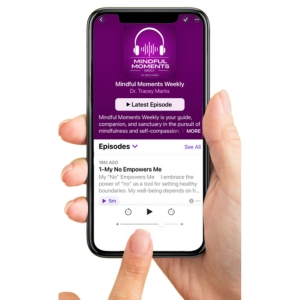Mindfulness Movement for Mental Health
When you think of exercise, what comes to mind? For many, it’s running, lifting weights, or fitness classes. While these are excellent for physical health, there’s another type of movement that stands out for mental health: mindfulness-based practices like yoga and tai chi. These practices not only strengthen the body but also cultivate mental resilience.
Products To Support You

Mindful Moments Subscription

Positive Prompts 22oz skinny tumbler
Let’s explore the science behind mindfulness-based movement, its benefits, and how you can incorporate it into your routine—even if you’re just starting out.
The Mind-Body Connection Through Movement
Yoga and tai chi are often called “mind-body” practices because they foster harmony between your mind and body. But what does this really mean?
Originating from ancient traditions (yoga from India and tai chi from China), these practices share a key element: mindfulness. They require you to focus on your breath, bodily sensations, and the flow of movement. Unlike traditional exercises, where zoning out might happen, yoga and tai chi encourage you to tune in completely.
Two important concepts explain their effectiveness:
- 1Interoception: This is your ability to sense internal body states, like noticing a faster heartbeat when nervous. Developing this awareness helps you detect early signs of stress and respond proactively.
- 2Embodiment: Feeling fully connected to your physical self can balance your mind and body, helping you manage stress and regulate emotions more effectively.
How Mindfulness-Based Movement Affects the Brain
These practices do more than calm your mind—they reshape your brain. Research shows that tai chi increases connectivity between brain regions responsible for managing emotions and decision-making, such as the prefrontal cortex and the premotor cortex. This improved connectivity helps you stay calm under pressure, make thoughtful decisions, and manage emotions effectively.
Key Benefits of Mindfulness-Based Movement
Mindfulness-based movement provides a range of benefits for mental health:
- 1Regulating the Autonomic Nervous System Mindful movements activate the vagus nerve, which is part of the parasympathetic nervous system. This reduces your stress response over time, making you more resilient in high-pressure situations.
- 2Improving Emotional Balance By calming the amygdala (the brain’s fear center) and strengthening the prefrontal cortex, practices like yoga and tai chi reduce symptoms of anxiety and depression. This can help you better navigate emotionally charged situations.
- 3Releasing Trauma Stored in the Body Stress and trauma often manifest as tension in the body. Yoga and tai chi promote gentle movements that help release this stored tension, making them effective tools for trauma recovery. Trauma-sensitive yoga, in particular, offers a safe environment for gradual healing.
Getting Started with Mindfulness-Based Movement
If you’ve never tried yoga or tai chi, it’s okay to start small. Here’s how:
1. Choose Your Practice
2. Start Small
Begin with 5-10 minute sessions. Focus on your breath and how your body feels instead of perfecting each movement.
3. Use Resources
Free online platforms like the Nike Training Club app offer yoga classes. The Tai Chi Foundation provides online classes for beginners.
4. Create a Comfortable Environment
Choose a quiet space, wear comfortable clothing, and use a mat or soft surface for yoga.
Tailoring Practices to Your Needs
Building a Sustainable Habit
Consistency is key to reaping the benefits of mindfulness-based movement. Here’s how to build a routine:
Enhancing Your Practice
For a holistic approach, combine mindfulness-based movement with:
Conclusion
Mindfulness-based movement is more than just exercise. It’s a tool to strengthen your mind, balance your emotions, and build resilience. By incorporating practices like yoga and tai chi into your life, you can nurture your mental health and create a stronger foundation for overall well-being.
Ready to get started? Explore a beginner’s class or set aside just 10 minutes today to experience the power of mindful movement. Your mind and body will thank you.

